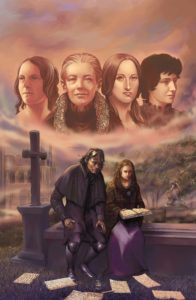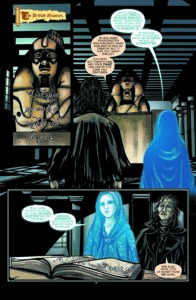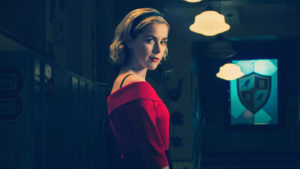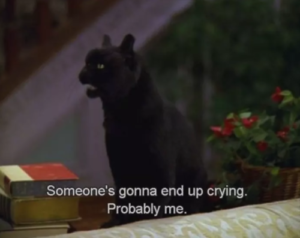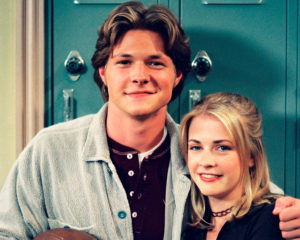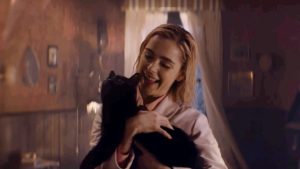When I first buckled down to seriously try writing after graduating from college, I dreamed of crafting epic fantasy similar to books by George R.R. Martin and Joe Abercrombie. Their works were breaths of fresh air. Unlike the novels of Tolkien or Robert Jordan, these authors eschewed the black-and-white worldview of good versus evil for shades of gray. I wanted to write just like them.
Of course, I eventually discovered that there’s a reason Martin and Abercrombie are best-selling authors, and Martin takes many years between books. What they do is really, really hard.
Switching to Young Adult
Discovering that writing epic fantasy is a monumental task was the first step in finding my authorial voice. My critique group told me that my writing was more suited to a young adult audience. At first, I was dismissive of this observation, but I came around when I started reading more young adult fantasy and science fiction. I soon appreciated these books possess an intoxicating sense of adventure and discovery.
 Eventually, I abandoned my quest to craft an epic fantasy for adults to attempt a young adult fantasy. A theme that fascinated me was the sense of estrangement and otherness that young people often feel at one time or another. At least, I recall feeling that way as an adolescent. My interest in this topic was enhanced by my experience traveling solo to Japan while a young man.
Eventually, I abandoned my quest to craft an epic fantasy for adults to attempt a young adult fantasy. A theme that fascinated me was the sense of estrangement and otherness that young people often feel at one time or another. At least, I recall feeling that way as an adolescent. My interest in this topic was enhanced by my experience traveling solo to Japan while a young man.
I have been fascinated with Asia, especially Japan, from a young age. My initial interest in Japan stems from the original Shogun miniseries and my father’s fascination with the country. Even now, close to twenty years later, I vividly recall visiting Japan’s ancient capitals, Kyoto and Nara, and traveling to Himeji to tour the majestic castle there. It was a fantastic trip that enhanced my interest in Asia and taught me a lesson about how people who find themselves in the minority for whatever reason feel.
Growing up in the Pacific Northwest in the 1980s and 1990s, I always found myself in the majority. Most of my classmates and friends looked like me and had similar upbringings. The struggles of minorities, either in race, gender identity, ideology, or social standing, always seemed distant. These people and their challenges were something I only experienced on the nightly news, never firsthand.
I can’t claim to know precisely what it’s like to be a minority because I’m not one. But in Japan, I came about as close as I probably ever will. Kyoto is a touristy city, but most tourists are Japanese. While meandering the grounds of ancient temples, I was often the only foreigner, a gaijin. I attracted attention wherever I went, especially from school children with assignments to speak English to a foreigner. None of these interactions were negative, but I was very aware that in this environment, I was in the minority, that I was the other. For someone who had never experienced that before and was naturally introverted, it was uncomfortable at the time. I look back at it now as a wonderful experience. It gave me an inkling of what it is like to be a minority and taught me firsthand that the Western view of the world is only one perspective among many.
Later, I would draw upon my experiences in Japan and Southeast Asia in my writing for young adults.
Weaving in Themes
Feeling like the other and being caught between two worlds are themes that come up time and again in my young adult fantasy series, The Allison Lee Chronicles. Being a fantasy series, in some ways, the themes are apparent. Allison discovers she is a shape-shifting monster. Eventually, everyone knows she’s different; some people are fans, and others are not. However, I wanted to express these ideas more subtly, too, and that proved a difficult task.
While working on Dragons Walk Among Us, the first novel in the series, I was fortunate enough to read Seraphina by Rachel Hartman and EXO by Fonda Lee. These authors explored themes similar to those I wanted to investigate. Their protagonists were caught between worlds with divided loyalties and experienced feeling like the other due to their heritage and outlooks, and the novels’ antagonists weren’t evil villains. In many ways, the books were as morally gray as George R.R. Martin’s and Joe Abercrombie’s works without being relentlessly grim.
Reading the novels of Hartman and Lee helped me express Allison’s internal struggles of feeling like the other and being trapped between two worlds more subtly than I would have otherwise. I owe these authors and their books a debt of gratitude. They helped open my eyes to how wonderfully imaginative and thoughtful the young adult genre can be.
Conclusion
If I’ve learned anything on my writing journey it’s that your authorial voice can differ from what you expect or want it to be. When I first started writing, I never anticipated ending up as a young adult author. I also didn’t think my travels as a young man to Japan would have a thematic impact on my writing. But it did.
As a writer, I have benefited from being open to new experiences and perspectives and willing to reinterpret old ones. It helped me craft my authorial voice and find success.
Author Bio

Dan Rice pens the young adult urban fantasy series The Allison Lee Chronicles in the wee hours of the morning. The Wrath of Monsters, the third installment in the series, will be out on June 19, 2024.
To discover more about Dan’s writing and keep tabs on his upcoming releases, check out his blog and join his newsletter.
If you’re an author or other fantasy and science fiction creative, and want to do a guest blog post, please check out the guest blog post guidelines. Or if you’re looking for community from other F&SF writers, sign up for the Rambo Academy for Wayward Writers Critclub!





